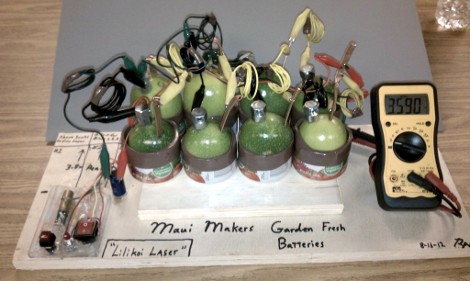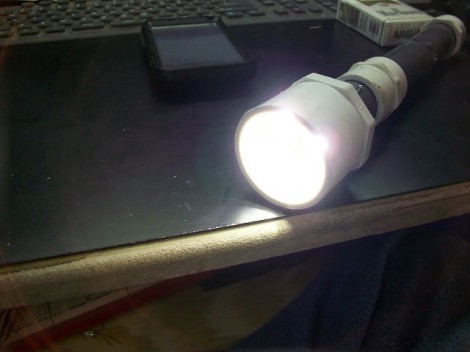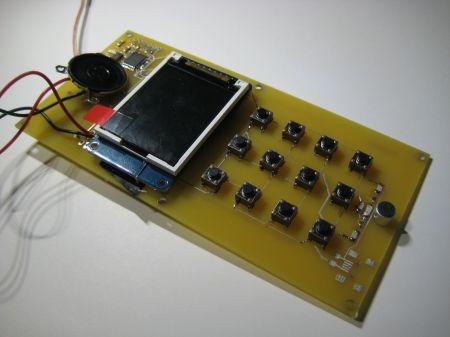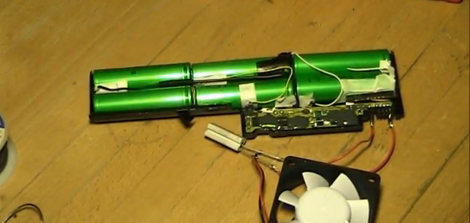
Apparently being overrun by ripe Passion Fruit is a problem if you live in Hawaii. [Ryan K’s] solution to the situation was to use his extra fruit to power a laser. In an experiment that would make [Walter White] proud, [Ryan] gathered everyday supplies to form a battery based on the fruit.
He used some galvanized bolts as the source of zinc. It forms one pole of each cell, with a thin copper tube as the other pole. Each cell is rather weak, but when combined with others it makes a respectable battery. We’ve seen acidic fruit used to power LEDs, but [Ryan] wanted to do a little more. He built a circuit that would store electricity until he had enough potential to power an LED diode. After the break you can see a four second clip of the fruit wielding its new laser defense system.

















